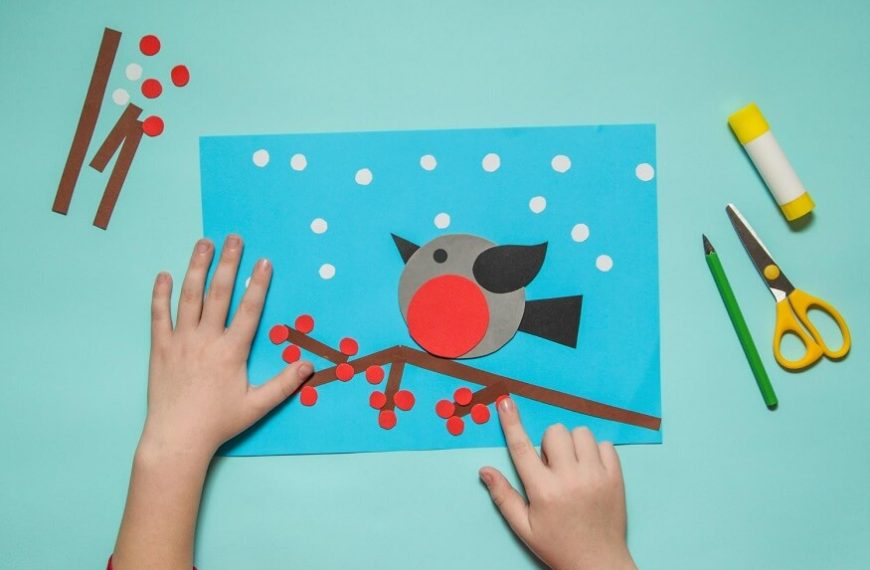Art is a powerful medium for children to express themselves, explore their artistic skills, and learn new skills. Tape art projects are a fun and unique way for kids to learn about art. In this blog, we will discuss five inspiring ideas, the significance of creative tape art projects for children as well as detailed instructions for implementing them.
What is Tape Art?
Children’s creative tape art involves the use of sticky tapes of various colors, textures, and types to create unique and visually appealing artwork. This type of art allows children to experiment with different materials and express themselves in unconventional ways. Tape art, as compared to traditional drawing or painting, adds a visual and multidimensional element to the creative process.
Why is Tape art important?
- Cognitive Development:
- Emotional Expression:
- Collaboration and Social Skills:
- Boosting Confidence:
- Unleashing Imagination:
Engaging in tape art projects enhances cognitive development by stimulating problem-solving skills and spatial reasoning. As children plan and execute their ideas, they are actively using their brains to navigate through the artistic process. This helps in the development of critical cognitive skills necessary for academic success.
Children can express their emotions through art in a calm way. Tape art projects provide a unique outlet for emotional expression, allowing children to express themselves through colors, shapes, and patterns. This psychological relief is essential for a kid’s mental health.
Tape art projects often involve collaboration, encouraging children to work together to bring their ideas to life. This fosters teamwork and communication skills, essential for their social development. Learning to collaborate on art projects teaches children the importance of listening to others ideas, compromising, and appreciating diverse perspectives.
Completing tape art projects instills a sense of accomplishment in children, boosting their self-esteem and confidence. Seeing their ideas materialize and receiving positive feedback reinforces a positive self-image. This increased confidence can positively impact other areas of their lives, encouraging them to take on challenges with a can-do attitude.
Tape art ideas offer an infinite canvas for creativity. Children can express themselves creatively without being limited by traditional art forms, encouraging them to think outside the box. Tape art’s flexible nature allows children to experiment with colors, shapes, and patterns, fostering a sense of wonder and curiosity that is essential for developing a creative mindset.
Inspiring Tape Art Ideas:
- Masking Tape Art in Canvas:
- Interactive Tape Murals:
- Washi Tape art:
- Tape Collage Portraits:
- Abstract Tape Weaving:
Materials: Canvas, various colors of masking tape, acrylic paint, and brushes. Method:
Start with a blank canvas and lay down strips of masking tape in geometric patterns or freeform designs. Encourage children to experiment with different angles and shapes. Once the tape is in place, allow children to paint over the entire canvas using vibrant acrylic colors. They can blend and mix colors to create visually striking effects. Once the paint is dry, carefully peel off the masking tape to reveal the crisp lines and patterns created by the tape.
Materials: Large paper or cardboard, colorful tape, markers. Method:
Attach a large sheet of paper or cardboard to a wall or any flat surface. Invite children to create a collaborative mural using colorful They can outline shapes, create patterns, or even build a themed scene. Encourage them to use markers to add details or draw within the tape-created shapes.
Materials: Cardboard, a variety of washi tapes, scissors. Method:
Provide children with cardboard and an assortment of colorful washi tapes. Instruct them to create three-dimensional sculptures by cutting and folding the cardboard, and securing it with washi tape. Encourage experimentation with different shapes and sizes to promote spatial awareness.
Materials: Cardstock or canvas, various tapes, scissors, magazines. Method:
Have children create a base by covering cardstock or canvas with a layer of tape. Ask them to cut out pictures from magazines or draw elements to form a collage on the taped surface. Overlay additional strips of tape to secure the collage and add a unique texture to the artwork.
Materials: Cardboard, colorful tape, yarn or ribbon, scissors. Method:
Cut notches along the top and bottom edges of a piece of cardboard. Create a warp by attaching tape vertically between the notches. Have children weave yarn or ribbon horizontally through the tape, experimenting with colors and patterns to create a vibrant woven masterpiece.
Implementing Creative Tape Art Projects:
- Provide a Variety of Tapes:
- Encourage Experimentation:
- Facilitate Reflection and Discussion:
- Create a Supportive Environment:
- Showcase and Celebrate Artwork:
Offer an assortment of tapes, including colored masking tape art for kids, washi tape art, and painter’s tape. This variety allows children to experiment with different textures, adhesiveness, and colors, enhancing their sensory experience.
Foster a culture of experimentation by emphasizing that there are no strict rules in tape art. Encourage children to explore various techniques, combine colors freely, and take risks in their creations. This not only sparks creativity but also instills a sense of confidence in their artistic abilities.
Children can convey their creativity without the limitations of standard forms of art, encouraging them to think outside the box. Tape art’s open-ended nature allows children to experiment with colors, shapes, and patterns, creating a sense of curiosity and wonder that is essential for developing a creative mindset.
Foster a supportive and non-judgmental environment where children feel free to express themselves through tape art. Celebrate their unique creations and highlight the value of individuality in artistic expression. This supportive atmosphere encourages a positive attitude towards art and creativity.
Display children’s tape art creations in a dedicated space, such as a classroom gallery or a virtual platform. Celebrate their achievements and provide opportunities for them to share their artwork with peers, parents, and the community. This public recognition not only boosts their confidence but also reinforces the importance of creative expression.
At EuroKids, we believe that creative learning experiences encourage complete growth. Our preschool programs go above and beyond what is expected, encouraging children to explore their artistic talents, such as the exciting world of Tape art. Creative tape art projects for children are more than just fun activities, they are powerful tools for holistic development. From enhancing cognitive and fine motor skills to fostering emotional expression and boosting confidence, these projects play a crucial role in shaping well-rounded individuals.















